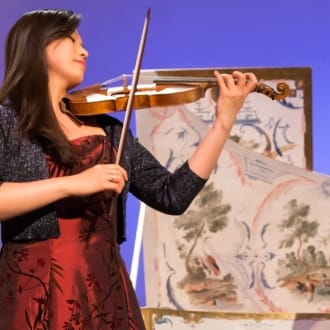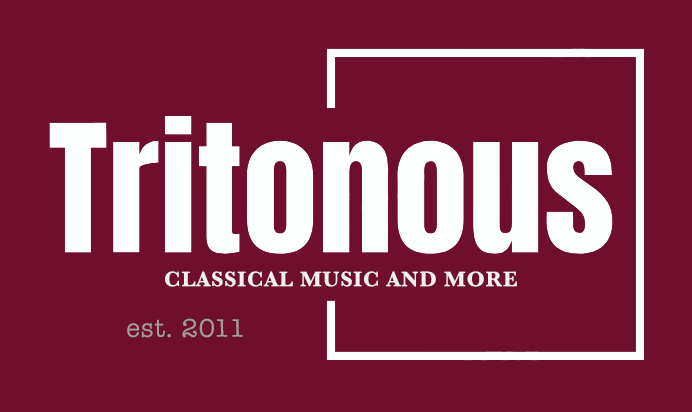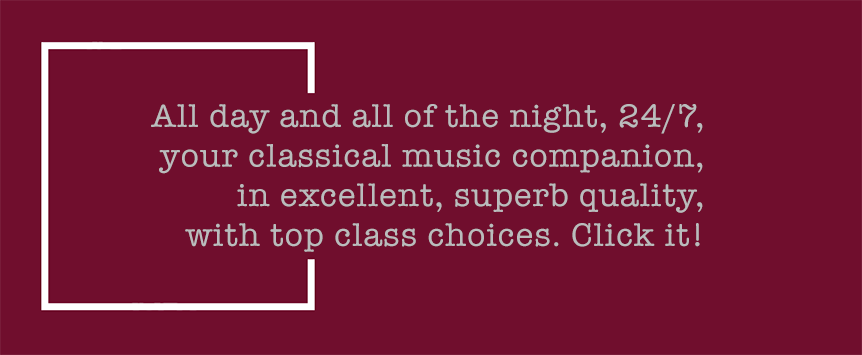
Itinéraire Broque en Périgord, 2024 II: Baroque en Cercles
Un pélèrinage Buxtehude; Ensemble Fantasticus. Église Abbatiale Saint-Cybard de Cercles. 2.8.2024
Dietrich Buxtehude (c. 1637-1707) Sonata in G, BuxWV 271. Trio Sonata in A minoe, Op. 1/3 / BuxWV 254. Sonatas: C, BuxWV 266; in D,Bux 267; in F, Bux 269.
Antonio Bertali (1605-1669) Sonata for two violins, viola da gamba and basso continuo.
The first concert of the second day of the 2024 iteration of Itinéraire Baroque began with a fascinating investigation of the usic of Dietrich Buxtehude via the Ensemble Fantasticus. The members of the group are its founder, Rie Kimura, Baroque violin Robert Smith, viola da gamba, Maggie Urquart (violone) and Pieer Jan Beider (harpsichord, organ, theorbo). These are some of the foremost interpreters of Baoque music; previously, Robert Smith has excelled at Iinéraire Baroque; this was no exception. Rie Kimura is a major violinist, too, and they were joined by colleague of equally exalyd level.
Perhaps best known for his organ music, Sweidish-born, Lübeck-based Buxtehude was one of several leading composers for that instrument of his time (others include Johann Pachelbel in Nürnberg and Geog Böhm in Lüneberg). Johann Sebastian Bach’s own pilgrimage to hear Buxtehude in Lübeck (a long way on foot for JSB) is the suff of legend; our own journey to the church in Cerles for this pilgrimage was thankfully far less of a journey.
The Sonata in G, BuxWV 271, is on of several that exist out of the published collections of chamber music (the 15 Trio Sonatas, Opp. 1 and 2, BuxWV 252-263). It comprises five well-contrasted movements, alternating fast and slow. The sense of joy in counterpoint in the first movement is palpable. Harpsichord is used for the jaunty first movement (there is little dour in Buxtehude’s chamber music), and then organ for the second movement Adagio, changing back to harpsichord for textural contras in the faster section. Details mattered: cadential approaches were carefully prepared. Always the players had their ears on the long-distance harmonic arrivals, and yet detail was constantly treated like a rare treasure. There was a galant aspect to the third movemen, as civilised as could be. Voices were perfectly delineated here (the two violins interact in a manner not entirely dissimilar to that of Bach’s Double Violin Concerto); while Kimura’s voilin seemed to go full-on Stylus phantasicus for the fourth movement Adagio before the Allegro recontextualises teh music’s opening repeated note. The brief finale was full of life, all participants of equal contrapuntal voice. A rae way to start a lunchtime.
Here is a fascinating an relevant alternative: Ton Koopman (who after all pretty much is Itinéraire Baroque) with Jonathan Manson, Mike Fentross, Catherine Manson and David Rabinovich:
The Op. 1 Trios were published in the last decade of the 17th century. The line-up is of violin, viola da gamba, and continuo. The viola da gamba was still “in,” replete with aristocratic roots; the violin was perhaps mote associated with more popular forms of music. The set was dedicated to his employers at Lubeck. There are seven trios in op. 1, not wo alike in a formal sense: The third is in this layout: Adagio-Allegro-Largo-Presto (moving to Adagio/Lento). No. 3 is the only one with a wholly independent slow movement a its opening. The harmonic motion is slow, too, giving a sense of timelessness, a sense palpably invoked here by Ensemble Fantasticus. This performance, more than any other I have heard, obeyed an inevitability of melodic line; it all felt so nahual. The interweaving of lines in the Allegro was magical, Kimura and Smith absolute equals. It is of course part of live performance in a rural church that avian audience members might arrive unannounced and randomly, and so it was here, as a bird soared over the unflappable players. But it is the asonishing opening ofth third movement, with its chromatically-inflected descents, that should astonish, and so it did here, the players intent on projecting Buxtehude’s daring. The finale is, in response, almost unbearably jaunty. A fantastic performance of a truly great pice of chamber music.
Thre are miracles of invention in the Sonata in C, BuxWV 266 (two violins, viola da gamba and basso continuo). The organ adds a sense of depth, enhanced by the violone (Maggie Urquart). Rie Kimura’s Stylus pantasicus soliloquies against organ seemed to whisper storied into our ears; how the mood changed for what is essentially a gigue. This is a virtuoso composition, beyond doubt. . If the very close was not quite together, thei remains a performance to cherish, full of contrasts with the ability to take us to the most lachrymos interior spaces in the blink of an eye.
Here’s Koopman and pals again, now in BuxWV 266:
The Sonata in D, BuxWV 267 is if anything more impressive, Robert Smith’s gamba supremely expressive, a proper Baroque opera aria hijacked by teh chamber area. And how interesting to hear the chromatic decsents again, as if a bleed-though from another piece. The generally low pitch of this piece makrs it out: one can hear the contrapuntal interactions of gamba and violone perfectly under these conditions (and we did).
The Sonata in F, BuxWV 269 is far brighter, and now back to the full scoring of two violins, viola da gamba and basso continuo. And yet Buxtehude manages to insert heart-tearing moments within this generally right demeanou; Ensemble Fantasticus’ ability to act as musical chameleons stood them in good stead here.
Finally, a piece by Verona-born, Vienna-based Antonio Bertali (1605-1669), a real discovery. The unpeeling of counterpoint was stunning, a real flowering, each instrument getting its moment in the sun, including a lovely moment from second violinist Elise Dupont.
Lunchtimes should be like this every day.
If you want to hear Fantasticus in Buxtehude Trio Sonata, here is BuxWV 272 recorded in 2011 with a slightly different line-up (although Kimura and Smith are constants):
The Koopman Buxtehude can be purchased from Amazon here. A fine disc of Bertali Sonatas on the Accent label is available here.










